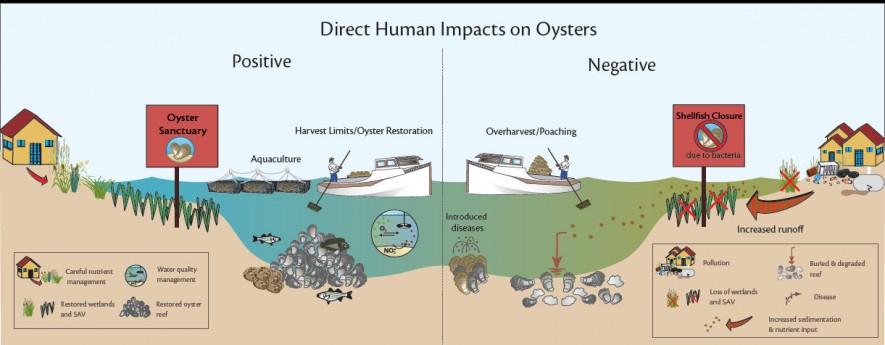The Nature Conservancy (TNC) just released their new and improved Coastal Resilience 2.0. web site:
This Coastal Resilience Decision-Support Tool supports decisions to reduce ecological and socioeconomic risks from coastal hazards (e.g., sea level rise and storm surge conditions).
NOAA Chesapeake Bay Office (Oyster) Website
(see http://chesapeakebay.noaa.gov/fish-facts/oysters)
K-12 Education Related to Oysters (“Oysters in the Classroom”)
(See http://www.mdsg.umd.edu/issues/chesapeake/oysters/education/)
Oyster Anatomy Laboratory
The oyster has a relatively simple morphology, anatomy and ecological role. This site has exercises to learn more about the external and internal anatomy of the eastern oyster, as well as how to shuck an oyster.
(See link (http://www.mdsg.umd.edu/issues/chesapeake/oysters/education/anatlab/)
Follow the Path of an Oyster in the Hatchery (Horn Pt. Oyster Hatchery)
http://hatchery.hpl.umces.edu/index.php/facilities/follow-the-path-of-an-oyster/
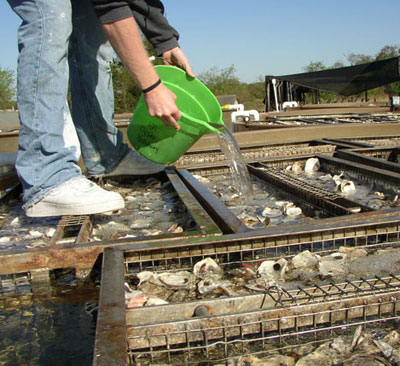
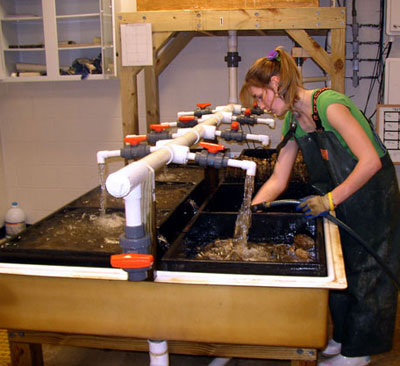
Teacher Resources
(see http://www.mdsg.umd.edu/issues/chesapeake/oysters/education/oys5e.htm)
Amazing Oysters Pop-Up Reef Lesson

A great starting point for children to study oyster reefs is to use Amazing Oysters educational activity. In this lesson, students will construct their very own miniature ecosystem reef. Included is information on critters on the reef and why reefs are important as a habitat. Students will also discover the threats to oyster reefs including disease (MSX and Dermo), pollution and over-harvesting (waterman used to call oysters Chesapeake Gold).
- Amazing Oysters Pop-Up Reef Lesson
- Amazing Oysters: An Educational Activity for Children
- Aquatic Reefs & Pilings
Historical ecology of oysters – 2012
https://sites.google.com/site/gricecove/historical-data-project
Historical ecology of oysters – 2013 (E. Sotka, C of C)
https://sites.google.com/site/gricecove/historical-ecology-of-oysters
MD’s Oyster Gardening for Restoration & Education
By William Goldsborough and Donald Meritt
(see http://www.mdsg.umd.edu/issues/chesapeake/oysters/garden/index.php)
- SC Oyster Restoration & Enhancement (SCORE)
- Oyster Recovery Partnership (ORP) is a 501(c)(3) non-profit based in Annapolis, MD that promotes, supports and restores oysters for ecological and economic benefits. They engage in numerous Chesapeake Bay-related projects using science-based “in-the-water” and “on-the-land” recovery efforts. They also conduct public outreach and education for the Chesapeake Bay, its marshes and rivers and associated organisms.
- MARTIN COUNTY OYSTER REEF RESTORATION PROJECT:
- Oyster Reef Restoration in Florida
- A Compilation and Summary of Four Short-Term Biological Monitoring Studies, June 2012 PDF
- TNC’s Oyster Reef Restoration: Southern Solutions for a Global Problem
- Oyster Sentinel, clearinghouse for environmental info and related health of estuaries in the Gulf of Mexico. Includes modeling tools to assess the impact of salinity alterations on oysters site selection for reef restoration, estimate timing and related info for sustainable harvests, etc.
- Shellfish Restoration Clamor
- University of Georgia’s Marine Extension Service
- Oyster Advisory Commission
- NOAA Habitat Conservation | Restoration Center
- Oyster Shell Recycling Program in TX
- Derelict Blue Crab Trap Removal Manual for Florida (some traps have been used for restoration purposes)
- Loxahatchee Water District Oyster Reef Presentation module (EXE)
- The National Shellfisheries Association
- Bagging Shell Operation for the ARRA Oyster Restoration Project in Alabama
- Restoring the Heart of Coastal Alabama-YouTube video 1
- Oyster Reef Restoration: The American Southeast-YouTube video 2
- MBWEB is an educational resource for marine biology students with reference lists organized by subject. Many other links are here including links to marine stations, tide information, recommended books and lots more!
The Exposed Surface Area to Volume Ratio: Is Shell More Efficient Than Limestone in Promoting Oyster Recruitment?
Presentation by Kelsey Kuykendall (GCRL), Paula Moreno (GCRL), Eric Powell (GCRL), Thomas Soniat (UNO), Susan Colley (UNO), Roger Mann (VIMS), and Daphne Munroe (Rutgers)
NSA 106th Meeting presentation, Jacksonville, FL, 2014.
Pdf here
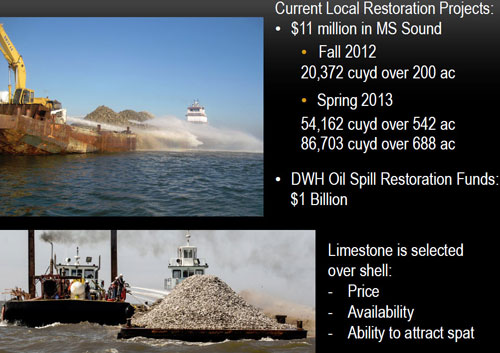
Clam breakage in survey mode: implications and data correction
Roger Mann (VIMS), Daphne Munroe (Rutgers), and Kelsey Kuykendall (GCRL)
Kelsey Kuykendall, graduate student at the Gulf Coast Research Lab, USM, Ocean Springs, MS
Poster from Mid-Atlantic Fisheries Management Council Meeting, December 2013
Pdf here
Oyster shells to be recycled to provide fishing habitat, aid in coastal restoration.
LouisianaSportsman.com
Andrew Canulette – June 7, 2013: Pdf
- Living Shorelines information
- Program Shapes the New Faces of Conservation
- Acoustic Mapping and GIS Aided Oyster Restoration (2007) in Chesapeake Bay
- Oysters: A Magnetic Attraction By An Unlikely Charismatic “Megafauna”
- Software Tools for Coastal-Marine Ecosystem-Based Management: Do We Have the Tools We Need?link
- Tools at this site support coastal decision-making by transforming Digital Coast data into information tailored for specific issues.
- This Coastal Resilience Decision-Support Tool supports decisions to reduce ecological and socioeconomic risks from coastal hazards (e.g., sea level rise and storm surge conditions).
Martha’s Vineyard Shellfish Group, Inc.
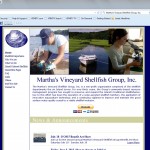 MVSG is a non-profit organization comprised of the shellfish departments the six island towns. For over thirty years, the Group’s community-based resource management program has sought to preserve and expand the Island’s traditional shellfisheries.
MVSG is a non-profit organization comprised of the shellfish departments the six island towns. For over thirty years, the Group’s community-based resource management program has sought to preserve and expand the Island’s traditional shellfisheries.
Included are a solar-assisted shellfish hatchery, use of innovative aquaculture techniques and a philosophy to improve and maintain water quality and a related viable shellfish industry.
Their work includes Crassostrea virginica (oyster) disease monitoring, C. virginica (Eastern oysters), Mya arenaria (soft shell clams), Mercenaria mercenaria (Atlantic quahogs), and Argopecten irradians (bay scallop) larval production, and related research, tetraploid broodstock for the bay scallop research, mussel culture, promotion of shellfish aquaculture, among others.
Link
See also link for several excellent short films

Reducing the Minimal-Legal Harvest Size of Oysters in Georgia
Thomas Bliss and Randal Walker, 2012, Marine Extension Service, University of Georgia, Shellfish Research Laboratory, 18pp. pdf
Diseases of Marine Animals (Vol. I-IV)
This multi-author book series was planned and edited by Prof. Otto Kinne. These books were published between 1980 and 1990 by John Wiley & Sons and the Biologische Anstalt Helgoland. The copyright holder is now Otto Kinne at Inter-Research. The “Diseases Books” are now freely available with open access.
Volumes I-III deal with Mollusca

Kinne, O., Ed., 1980-1990. Diseases of marine animals – Volumes I to IV (from Protozoa to Mammalia). Biologische Anstalt Helgoland, Hamburg. see http://www.int-res.com/book-series/diseases-of-marine-animals-books/ free to download
Dead Zones
Lack of oxygen a key stressor on marine ecosystems
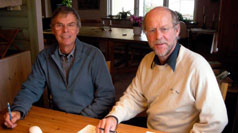 An on-going analysis by Drs. Bob Diaz (VIMS, Emeritus) and Rutger Rosenberg (University of Gothenburg)
An on-going analysis by Drs. Bob Diaz (VIMS, Emeritus) and Rutger Rosenberg (University of Gothenburg)
See link
SHELLSHOCKED: Saving Oyster to Save Ourselves, a documentary by Emily V. Driscoll
It follows efforts to bring wild oysters back to NY Harbor to restore the waterways. See http://www.shellshockedmovie.com/
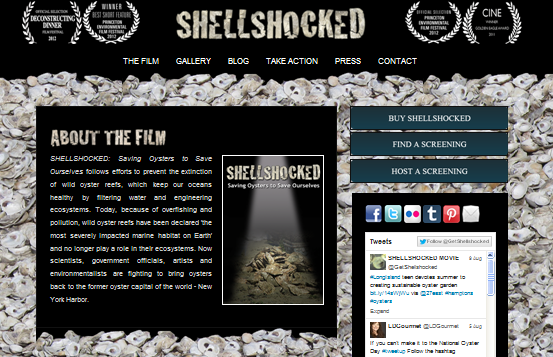
Status and Trends of US Wetlands in the Coastal Watersheds: 2004 to 2009
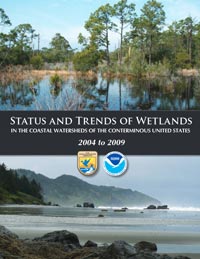 Dahl, T.E., and S.M. Stedman, 2013. Status and trends of wetlands in the coastal watersheds of the Conterminous United States 2004 to 2009. U.S. Department of the Interior, FWS and NOAA, NMFS, 46pp.
Dahl, T.E., and S.M. Stedman, 2013. Status and trends of wetlands in the coastal watersheds of the Conterminous United States 2004 to 2009. U.S. Department of the Interior, FWS and NOAA, NMFS, 46pp.
The United States is losing more than 80,000 acres of coastal wetlands each year, according to a report released by the FWS and NOAA, assessing coastal wetlands along the Atlantic, Pacific, Gulf, and Great Lakes coasts from 2004 to 2009.
Federal report: Rapid loss of coastal wetlands harming important waterfowl areas
Marine Debris and Related Links
NOAA’s Marine Debris Program (MDP)
Supports national and international efforts to research, prevent, and reduce the impacts of marine debris.
Link is at http://marinedebris.noaa.gov/
Map with links by geography (http://marinedebris.noaa.gov/marine-debris-where-you-live)
NOAA Disaster Debris related to hurricanes and tropical storms, tsunamis, floods, and landslides that impact U.S. coasts (link here)
Marine Debris: lost commercial fishing gear in Chesapeake waters
See following links:
http://ccrm.vims.edu/marine_debris_removal/
http://www.deq.virginia.gov/Portals/0/DEQ/CoastalZoneManagement/Marine_Debris_Lost_Commercial_Fishing_Gear…pdf
http://www.bayjournal.com/article/ghost_pots_estimated_to_kill_1.25_million_blue_crabs…
http://ccrm.vims.edu/publications/pubs/Havens%20et%20al%20NAJFM08.pdf
http://www.csc.noaa.gov/cz/CZ07_Proceedings/PDFs/Thursday_Abstracts/3477.Slacum.pdf
Southeast Atlantic Marine Debris Initiative (GA, SC, and NC)
See link at
http://sea-mdi.engr.uga.edu/projects2/north-carolina-projects/
NC Crabbers Join Effort to Clear Marine Debris (1/21/16)
by Kip Tabb link
Every year, the N.C. Division of Marine Fisheries closes the waters to commercial crabbing from mid-January to early February as a no-crab potting period so fisherman can remove their pots so that anything left in the water, except for those things that are legal, are considered abandoned and they can be removed and recycled or trashed. NC Sea Grant funded the initial 2 years and since then National Oceanic and Atmospheric Agency’s Marine Debris Program has continued to assist with funding.
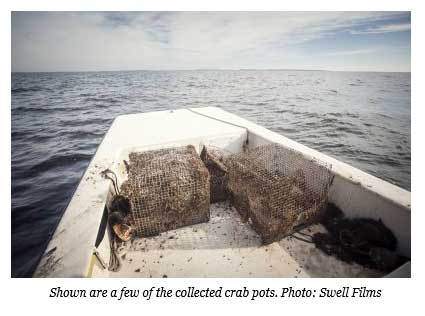
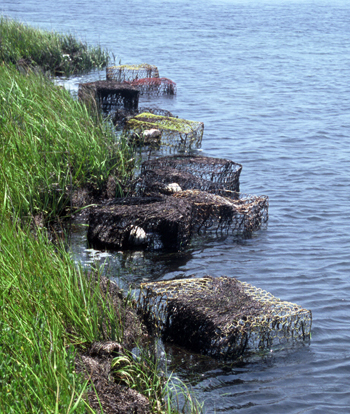
Marine Debris: lost commercial fishing gear in SC waters and uses for restoration
CONSTRUCT – Creating oyster niche structures through restoration using crab traps: the use of marine debris as an alternative substrate for ecologically-valuable oyster reef habitat.
PDF
https://www.dnr.sc.gov/crabtraps/crab_traps (survey)
Marine Debris: lost commercial fishing gear in GA waters and uses for restoration
Evaluation of eastern oysters, Crassostrea virginica (Gmelin, 1791), restoration techniques for use in intertidal southeastern United States habitats characterized by heavy siltation rates
Pdf
Marine Debris: lost commercial fishing gear in FL waters
Derelict Blue Crab Trap Removal Manual for Florida (some traps have been used for restoration purposes)
Derelict Crab Trap Removal Program through Tampa Bay Watch
Marine Debris: lost commercial fishing gear in Gulf of Mexico waters
See links at
http://www.gsmfc.org/derelicttraps.htm
detailed report at http://www.gsmfc.org/pubs/IJF/derelicttraps.pdf
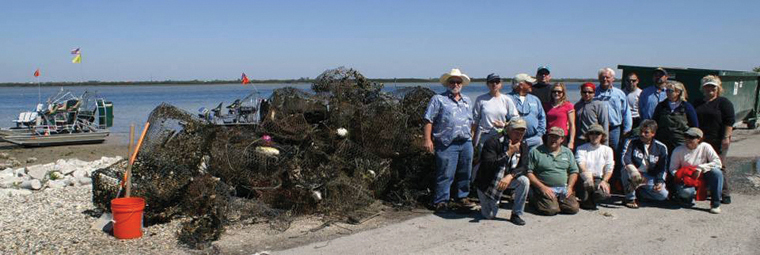
Marine Debris: lost commercial fishing gear in MS waters
See link at
http://www.usm.edu/gcrl/fisheries_center/derelict.traps.php
Marine Debris: lost commercial fishing gear in LA waters
See links at
http://www.laseagrant.org/crabtraps/faqs.htm
http://www.laseagrant.org/crabtraps/
Marine Debris: lost commercial fishing gear in TX waters
See link at
http://www.tpwd.state.tx.us/fishboat/fish/didyouknow/derelicttraps.phtml
Marine Debris: lost commercial fishing gear in western US/Canadian waters
See selected links at
http://www.snocomrc.org/Projects/Restoration/Derelict-Gear.aspx
http://www.derelictgear.org/
https://olis.leg.state.or.us/liz/2013R1/Downloads/CommitteeMeetingDocument/20539
http://www.env.gov.bc.ca/omfd/reports/derelict-fishing-gear-removal-report.pdf
http://seattletimes.com/html/localnews/2015045016_apwaderelictcrabpots.html
General Literature Related to Oysters and Restoration/Services
(see also Coen’s lit. link)
- ASMFC, 2007. The Importance of Habitat Created by Shellfish and Shell Beds Along the Atlantic Coast of the U.S., prepared by Coen, L.D., and R. Grizzle, with contributions by J. Lowery and K.T. Paynter, Jr., 106pp.
- Baggett, L.P., S.P. Powers, R. Brumbaugh, L.D. Coen, B. DeAngelis, J. Green, B. Hancock, and S. Morlock, 2014. Oyster habitat restoration monitoring and assessment handbook. The Nature Conservancy, Arlington, VA, USA, 96pp.
- Bahr, L.M. and W.P. Lanier. 1981. The ecology of intertidal oyster reefs of the South Atlantic Coast: a community profile. U. S. Fish Wildl. Serv. Program FWS/OBS/ -81/15, 105pp.
- Brumbaugh, R.D., M.W. Beck, L.D. Coen, L. Craig and P. Hicks, 2006. A Practitioners’ Guide to the Design and Monitoring of Shellfish Restoration Projects: An Ecosystem Services Approach. The Nature Conservancy, Arlington, VA., MRD Educational Report No. 22:28pp.
- Brumbaugh, R.D. and C. Toropova. 2008. Economic valuation of ecosystem services: a new impetus for shellfish restoration. Basins and Coasts 2:8-15.
- Brumbaugh, R.D., M.W. Beck, B. Hancock, A.W. Meadows, M. Spalding, and P.Z. Ermgassen, 2010. Changing a management paradigm and rescuing a globally imperiled habitat. National Wetlands Newsletter November-December 2010:16-20.
- Burrell, V.G., Jr., 1986. Species profiles: Life histories and environmental requirements of coastal fishes and invertebrates (South Atlantic)— American oyster. U.S. Fish Wildl. Serv. Biological Report 82 (11.57), U.S. Army Corps of Engineers TR EL-82-4, 17 pp.
- Burrell, V.G., Jr., 2003. The Oyster Industry of South Carolina, 67pp.
- Carmichael, R.H., A.C. Shriver and I. Valiela, 2012. Bivalve response to estuarine eutrophication: the balance between enhanced food supply and habitat alterations. Journal of Shellfish Research 31:1-11.
- Carmichael, R.H., W. Walton, and H. Clark, 2012. Bivalve-enhanced nitrogen removal from coastal estuaries. Can. J. Fish. Aquat. Sci. 69:1131-1149.
- Cerco, C.F., and M.R. Noel. 2007. Can oyster restoration reverse cultural eutrophication in Chesapeake Bay? Estuaries and Coasts 30:331-343.
- Chestnut, A.F., 1974. Oyster Reefs, 171-203pp, In: Odum, H.T., B.J. Copeland, and E.A. McMahan. 1974. Coastal ecological systems of the United States II. The Conservation Foundation, Washington, DC.
- Coen, L.D., M.W. Luckenbach, and D.L. Breitburg, 1999. The role of oyster reefs as essential fish habitat: a review of current knowledge and some new perspectives. Pp. 438-454, in L.R. Benaka, (ed.). Fish habitat: essential fish habitat and rehabilitation. American Fisheries Society, Symposium 22, Bethesda, MD.
- Coen, L.D. and M.W. Luckenbach. 2000. Developing success criteria and goals for evaluating oyster reef restoration: ecological function or resource exploitation? Ecological Engineering 15:323-343.
- Coen, L.D., B.R Dumbauld, and M.L. Judge, 2011. Expanding shellfish aquaculture: a review of the ecological services provided by and impacts of native and cultured bivalves in shellfish-dominated ecosystems. Ch. 9, 239-295, in: Shellfish aquaculture and the environment, S.E. Shumway, Ed., Wiley-Blackwell.
- Couch, D., and T.J. Hassler. 1989. Species profiles: life histories and environmental requirements of coastal fishes and invertebrates (Pacific Northwest)–Olympia oyster. U.S. Fish Wildl. Serv. Biol. Rep. 82(11.124). U.S. Army Corps of Engineers, TR EL-82-4. 8 pp.
- Dame, R.F., 1993. Bivalve Filter Feeders and Coastal and Estuarine Ecosystem Processes. NATO ASI Series, Vol. G 33. Springer, Heidelberg, Germany, 579pp.
- Dame, R., 1996. Ecology of marine bivalves: an ecosystem approach. CRC Marine Science Series, Boca Raton, 254pp
- Dumbauld, B.R., J.L. Ruesink, and SS. Rumrill, 2009. The ecological role of bivalve shellfish aquaculture in the estuarine environment: A review with application to oyster and clam culture in West Coast (USA) estuaries. Aquaculture 290:196-223.
- Cake, Edwin W,. 1983. Habitat suitability index models: Gulf of Mexico American Oyster, FWS/OBS-82/10.57, U.S. Fish & Wildlife Service, Washington, DC. 38pp.
- Couch, D., and T.J. Hassler. 1989. Species profiles: life histories and environmental requirements of coastal fishes and invertebrates (Pacific Northwest)–Olympia oyster. U.S. Fish Wildl. Serv. Biol. Rep. 82(11.124). U.S. Army Corps of Engineers, TR EL-82-4. 8 pp.
- Galtsoff, P. S. 1964. The American oyster Crassostrea virginica Gmelin. U.S. Fish Widl. Serv. Fishery Bulletin 64:1-480.
- Glancy, T.P., K. T.K. Frazer, C.E. Cichra and W.J. Lindberg, 2003. Comparative patterns of occupancy by decapod crustaceans in seagrass, oyster, and marsh-edge habitats in a northeast Gulf of Mexico estuary. Estuaries. 26:1291-1301.
- Gregalis, K.C., M.W. Johnson and S.P. Powers, 2009. Restored oyster reef location and design affect responses of resident and transient fish, crab, and shellfish species in Mobile Bay, Alabama. Trans. Am. Fish. Soc. 138:314-327.
- Grizzle, R.E., J.K. Greene, and L.D. Coen, 2008. Seston removal by natural and constructed intertidal eastern oyster (Crassostrea virginica) reefs: a comparison with previous laboratory studies, and the value of in situ methods. Estuaries and Coasts 31:1208-1220.
- Harding, J.M. and R. Mann, 1999. Fish species richness in relation to restored oyster reefs, Piankatank River, VA. Bull. Mar. Sci. 65:289-300.
- Harwell, H.D., M.H. Posey and T.D. Alphin, 2011. Landscape aspects of oyster reefs: Effects of fragmentation on habitat utilization. J. Exp. Mar. Biol. Ecol. 409:30-41.
- Kennedy, V.S., R.I.E. Newell, A.F. Eble, Eds., 1996. The Eastern Oyster: Crassostrea virginica. Maryland Sea Grant, College Park, MD, 734 pp.
- Kennedy, V.S., 1996. The ecological role of the eastern oyster, Crassostrea virginica, with remarks on disease. J. Shell. Res. 15:177-183.
- Kilgen, R. H. and R. J. Dugas, 1989. The ecology of oyster reefs of the northern Gulf of Mexico: an open file report. NWRC, 89-02. 113pp.
- Kimbro, D.L., J. Largier, and E.D. Grosholz, 2009. Coastal oceanographic processes influence the growth and size of a key estuarine species, the Olympia oyster. Limnol. Oceanogr. 54:1425-1437.
- Kramer, J.G. and K.G. Sellner (Eds.), 2009. Metadata analysis of restoration and monitoring activity database., native oyster (Crassostrea virginica) restoration in Maryland and Virginia. An evaluation of lessons learned 1990-2007. Maryland Sea Grant Publication #UM-SG-TS-2009-02; CRC Publ. No. 09-168, College Park, MD, 40pp.
- Kurlansky, M., 2006. The Big Oyster: History on the Half Shell. New York, NY, Ballantine Books.
- Northern Economics, Inc. Valuation of Ecosystem Services from Shellfish Restoration, Enhancement and Management: A Review of the Literature. Prepared for Pacific Shellfish Institute. September 2009, 58pp.
- Pauley, G.B., B. Van Der Raay, and D. Troutt. 1988. Species profiles: life histories and environmental requirements of coastal fishes and invertebrates (Pacific Northwest)–Pacific oyster. U.S. Fish Wildl. Serv. Biol. Rep. 82(11.85). U.S. Army Corps of Engineers, TR EL-82.4. 28pp
- Peter-Contesse, T., B. Peabody, 2005. Reestablishing Olympia oyster populations in Puget Sound, Washington. Washington Sea Grant Publication WSG-AS 05-04. 9pp
- Sanders, F. and T. Murphy, 2005. American oystercatcher, SC SWG report, 6pp.
- Sellers, M.A., and J. G. Stanley, 1984. Species profiles: life histories and environmental requirements of coastal fishes and invertebrates (North Atlantic)— American oyster. U.S. Fish Wildl. Serv. FWS/OBS-82/11.23. U.S. Army Corps of Engineers, TR EL-82-4. 15 pp.
- Stanley, J.G., and M.A. Sellers, 1986. Species profiles: life histories and environmental requirements of coastal fishes and invertebrates (Gulf of Mexico)–American oyster. U.S. Fish Wildl. Serv. Biol. Rep. 82(11.64). U.S. Army Corps of Engineers, TR EL-82-4. 25 pp.
- Status Review of the Eastern Oyster (Crassostrea virginica)Report to the National Marine Fisheries Service, Northeast Regional Office, February 16, 2007, NOAA Fisheries Eastern Oyster Biological Review Team, 105pp.
- Street, M.W., A.S. Deaton, W.S. Chappell, and P.D. Mooreside, 2005. Chapter 3 Shell Bottom, 201-256pp, In: North Carolina Coastal Habitat Protection Plan. North Carolina Department of Environment and Natural Resources, Division of Marine Fisheries, Morehead City, NC.
- Volety, A.K., 2013. Habitat: oyster reefs. In: W.K. Nuttle, and P.J. Fletcher, Eds. Integrated conceptual ecosystem model development for the Southeast Florida coastal marine ecosystem. NOAA Technical Memorandum, OAR‑AOML-103 and NOS‑NCCOS-163. Miami, Florida. 125 pp. pdf here (for others see, http://www.sofla-mares.org/download.html)
- Zimmerman, R., T. Minello, T. Baumer, and M. Castiglione, 1989. Oyster reef as habitat for estuarine macrofauna. NOAA Tech. Mem. NMFS-SEFC-249, 16pp. direct link to PDF

